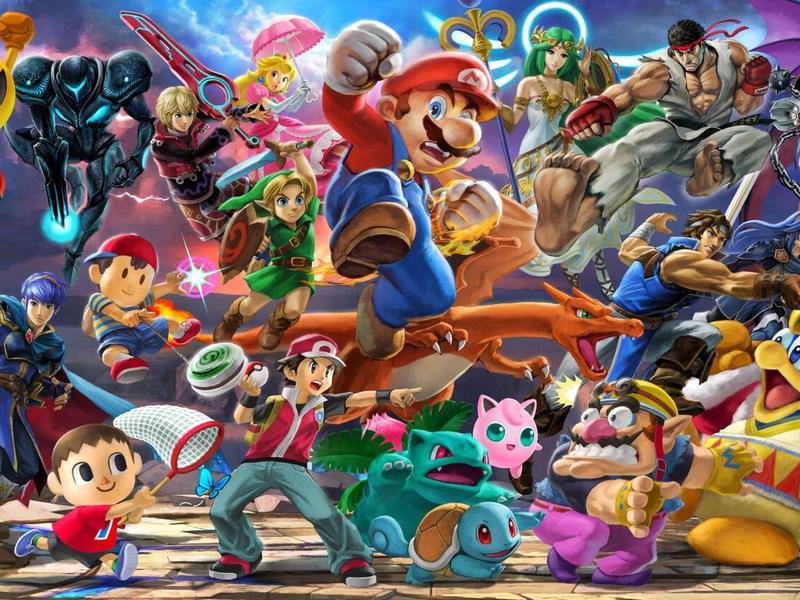‘Iconoclasts’ Game Review: Pixel Art That’s Like A Work Of Art
Iconoclasts
Iconoclasts is a game you’ve probably never heard of. That said, it’s also the game that’s been in a lot of people’s minds since 2011. That’s right, a game that took seven years to make is finally out this year, because one guy, Joakim Sandburg, decided being an indie developer was worth it. It might not be perfect, it might not be exactly what you hoped for, but good god in heaven did it come out exactly as he planned. A game for the pixel art-loving mouth breather in all of us, Iconoclasts is a game so graphically fantastic that every frame of motion is a new reason to keep playing.
Pixel art was a natural phenomenon of the past century. As graphics improved in the days of old, the quality and artistry of each game gradually increased, that’s why Super Mario Bros looks like ass compared to Super Mario World, the greatest game on the planet. As graphics continued to increase, pixel art was abandoned for the realism you see in every goddamn copy of COD (not in reference to fish, short for Call of Duty). What came with this attractive medium was a possibility of storytelling with essentially cartoons. Unlike polygonal “realistic” graphics, pixel art doesn’t age the same way due to the laws of animation, and judging by Disney movies, a good cartoon never ages. That said, it takes far more effort to painstakingly create high-quality images out of colored squares on a screen for hundreds of hours just to get across the idea of motion. Thus, to further the art form, indie developers like Cuphead, in it to create something unique and not just make quick cash, are our last hope in beautiful pixel art.
Boy oh boy is the pixel art beautiful. I don’t even think the character cutscenes in the trailer made it into the game. This game could be about a guy who kills orphans and eats poop and I’d love it simply for its art form. Obviously, that is not the plot, more on that later. The music isn’t spectacular, yet it captures whatever emotion it wishes to express, which is more than you can say for many other game “soundtracks.” From unease and tension to a tone that expresses the conflicting nature of comfort in a society similar to ours. Most story scenes function as you’d expect an RPG or Megaman game would, comprised of character interactions and textboxes. Less cinematic and more of a screenplay, this format takes you back to how games used to be, and it works.
That said, no wonder it’s an indie game, the story is wack. In a world where people are forced to undertake a worker ant religion, performing their assigned job or else facing an untimely demise via home explosions, main character Robin must illegally work as a mechanic in her morally corrupt society. How much must you love being a mechanic to maintain a deadly freelance career? Don’t worry about it, the main character never opens her mouth on the issue, nor any other issue as a silent protagonist. The story unfolds and within 20 minutes Robin destroys two government devices, gets her brother’s wife and daughter killed, and escapes on a scooter with her pirate lesbian girlfriend. Together with her band of screw-ups, Robin must save the world by shooting lasers, bombs, and charging her body with electricity to destroy Mother, who is essentially just Jesus. Also, you can gain superpowers, immortality, and anime hair by taking part in the government’s secret genocide project to turn people into fuel. Thankfully, all of the major villains turn into trees. Before you ask, yes, this is all true.
The end goal is to dismantle the religion in order to let people freelance and make their own businesses (thanks capitalism). Side question, what is it with game developers and organized religion? Games of old had parallels to angels and gods because, well, how else do you portray unquantifiable power in a fashion that players can instantly comprehend? Ever since this form of symbolism in final bosses in Final Fantasies 6 and 7, there have been more and more plots like FF10 where religion is the main enemy and their god must be purged. You’d think we’d outgrow this form of storytelling, yet here we are.
That said, the story is more mature than the cartoon-esque graphics would lead you to believe. Instead of focusing on the religion itself, it focuses on the divide between different beliefs and political agendas. When the final confrontation with Mother arrives, it’s much less of a “mortal meets messiah” moment and more of a “prelude to the Kennedy assassination.” Mother handles situations, judging by the one scene she is in, like an enraged person in power rather than a religious symbol. I was going to make a comment about how an emotionally charged, arrogant, rich person with no idea or responsibility as to what they are doing could assume the role as leader, but as current politics would lead me to believe, that argument is no longer a factor. In laymen’s terms: the writing is terrific. But breaking away from old tropes? Not as “yuge” strides as you might think. Before I turn into a stand-up comic who can’t do anything besides make fun of the president, let’s move on.
This version of Seinfeld stars the most terrible people you will ever meet in your entire life and also Robin. Four main characters, one of which says nothing and does everything right (that’s you), one is an emotionally unstable teenage girl, one screws you over consistently before angering a spaceship, and one is Elro, the worst human being on the planet who loves assassinating politicians. It seems as if every single character in this game is arrogant in one way or another. The silent protagonist with a heart of gold trope has been done to death, yet with such a dialogue-heavy game with detestable yet very human characters, I’m glad this choice was made. Half of these characters would rather make bad decisions than breathe air.
The dialogue ranges from running gags like “Mina smells bad,” to casual mentions of cancer in reference to paranoid MedMD users, to angsty, uncomfortably awkward fights with Mina’s mom, to lore that’s actually kinda interesting. Not the lore about Mina’s magic seed grenades, though. That’s Mcguffin 101. Regardless, with such a range, you’ll find something to love, regardless of intense body horror fatalities of your favorite cast members.
In sum, character development and story nice. Mature themes. Moving on.
More importantly, the controls are, once you get the hang of them, very fun. Even in the ridiculous challenge mode where one hit kills you, even when searching aimlessly for secrets littered around the maps, you will find yourself enjoying simply moving around the character, perhaps the most important thing about metroidvania games like these. Elro is the only character who legitimately sucks to control “on purpose,” yet the final moments of the game shouldn’t be where the player’s patience is tested.
Of course, it would be nice if everything was explained better. Every weapon you receive and power-up you craft is a true reward, although each weapon has its own unique cooldown time to accompany its charge mechanic. Although a Metroidvania game at heart with a Megaman sci-fi anime story, your mechanics aren’t as game breaking. You can only jump once (twice after equipping a power-up), yet the tweaks you can craft offer a reasonable boost by using secrets and treasures hidden on the map as currency. This allows a player to customize their playstyle, and even this is balanced by these powers being taken away for every hit you receive.
At the same time, the final gun is incredibly overpowered, even the cooldown isn’t a balance for its raw firepower and abusable space mechanic. Switching places with enemies is broken if you know how to use it, and while the puzzles for this weapon are charming as heck, it’s simply too much for most of the game’s enemies to handle. Not that it matters, as by the end of the game, you’ll find yourself running from combat. Invincible body-armor enemies and elite guards that you have to wait to attack to damage make fighting nearly impossible. You can suffer through it, but it’s not fun (this is a game, after all).
The game itself is fun, however, and the story, although ridiculous and highly depressing, is one of its kind if you allow it to be forced down your throat. You actually feel as if something is at stake. As if the weight of the world is on your shoulders, a world just like ours, and you just don’t know what you can do to solve these problems. You don’t know everything, you have just enough information to feel the crushing doom of the planet and the increasing tension of your beautiful, yet dying world with freshly crushed societies. Too many sci-fi games like this explain too much or make it clear that “you have to believe in yourself” or that the “power of friendship will save the day.” This is not the case on this game. This is not some weeby JRPG. You kill people. People die. There are consequences at every corner and, for the most part, you are alone on your journey to do the next right thing.
The game is all that and a bag of seeds. If you want to experience a fresh twist on an old classic, this 2-D platformer has combat, puzzles, beauty and a story to remember. It’s anything but perfect, yet you’re not going to find anything if you search for perfection. A labor of love and filled to the brim with crazy BS, Iconoclasts might not be iconic, but it’s one hell of a ride.





